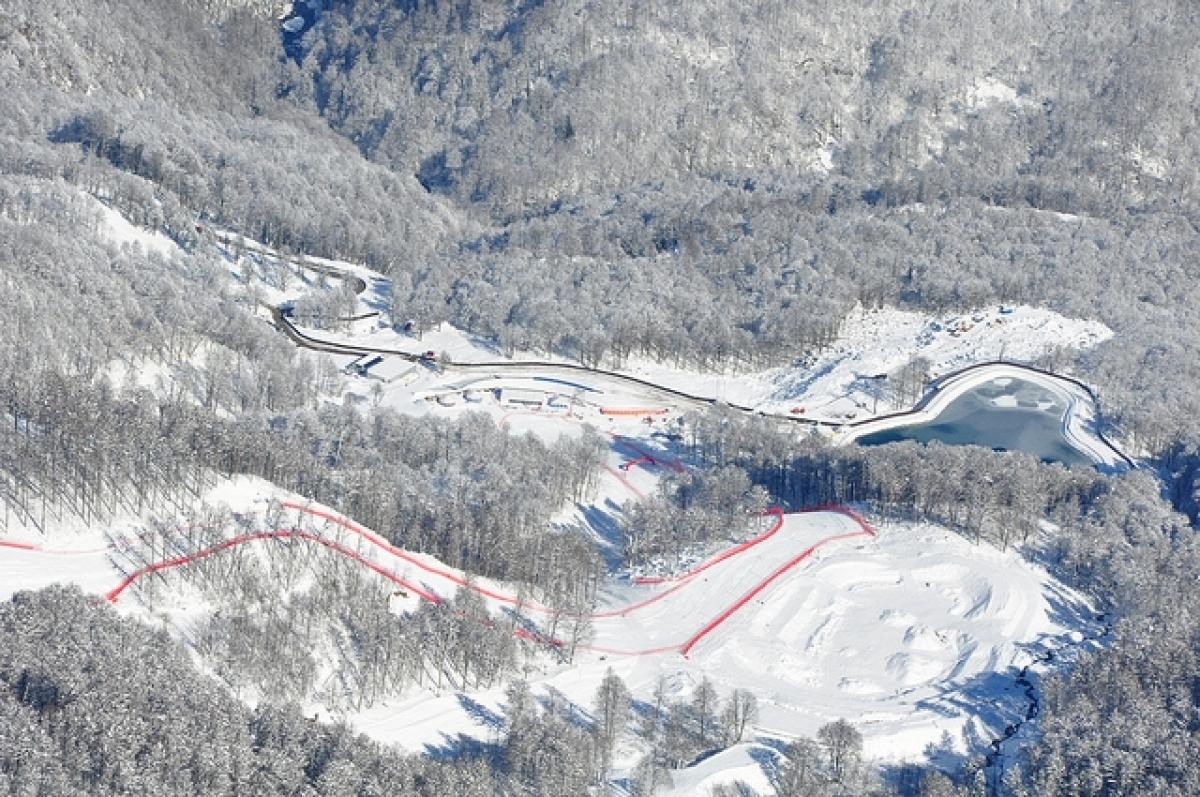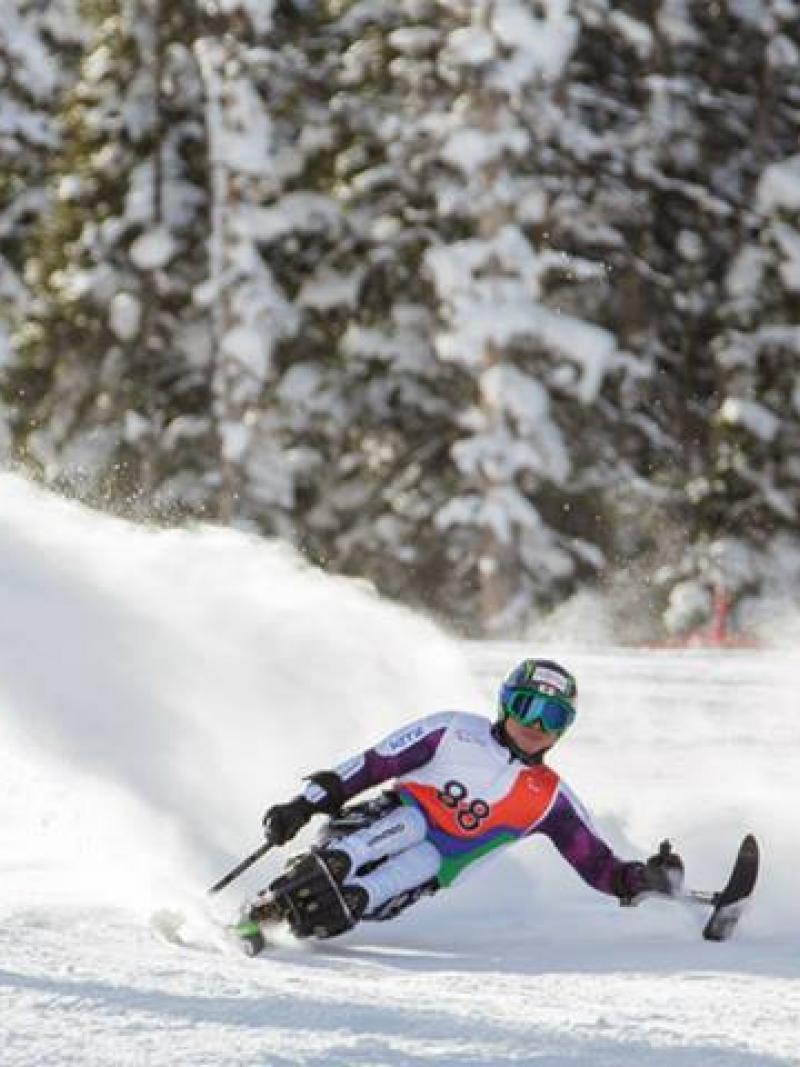Sochi 2014 is ready whatever the weather
Organisers have implemented a range of innovative solutions to ensure the weather does not interfere with the Games. 02 Feb 2014
Rosa Khutor Alpine Centre will host the alpine skiing and snowboard competitions at the Sochi 2014 Paralympic Games.
With just over one month to go until the start of the Paralympic Winter Games, the Sochi 2014 Organising Committee is fully prepared to stage the Games regardless of the weather conditions.
The complex range of measures developed provides accurate forecasts, rapid responses to any changes in weather and modern technological solutions. These measures combined will help to ensure the Games are hosted successfully. The 2012-2013 season of Test Events allowed organisers to be perfectly ready in a mountain climate at high altitude.
The Federal Service for Hydrometeorology and Environmental Monitoring of Russia is responsible for meteorological support for the Sochi 2014 Olympic and Paralympic Games. Its new website – meteosochi2014.ru - launched specifically for the Games allows the monitoring of the weather in the region in real time. The site provides information about the weather in Sochi and provides extra information about any potential hazardous weather conditions, satellite data and radar monitoring.
Forecast
Thanks to the most modern technological devices, instruments and methods of observation, Federal Service for Hydrometeorology predicts that the forecast accuracy at the Sochi 2014 Games will exceed 90 per cent. Innovative solutions in the field of monitoring and forecasting will not only allow to promptly follow all the weather's changes, but also to be prepared for any changes in conditions.
In preparation for the Sochi 2014 Games, the Organising Committee has taken into account the range of possible risks related to weather and uses the hydro meteorological data for planning its operations.
Weather monitoring will be based on the data provided by the automatic weather stations network. A system of meteorological observations has been developed and organised for meteorological support during the Games, consisting of automatic weather stations - 12 weather stations under the national monitoring network and a further 18 as part of the infrastructure in the Mountain Cluster. Their data is collected every 10 minutes and is then sent to Federal Service for Hydrometeorology. It includes information about the physical characteristics of the surface air layer, including its temperature and humidity, wind speed and direction, visibility, pressure, quantity and intensity of precipitation and cloud base height.
The Doppler weather radar installed on the Akhun mountain (Sochi) receives and interprets information about the location, water saturation, movement path and power of cloud systems within the radius of about 250 km from Adler. Using modern radar allows not only to identify and predict the zone and the intensity of rainfall, but also to monitor its movements. Combining the radar data obtained from the Anapa, Krasnodar, Mineralniye Vodi radars, as well as two Turkish locations (Trabzon, Samsun) allows for the monitoring of the weather process development right across the eastern part of the Black Sea.
An important component of monitoring the weather will be the permanent (Tuapse) and temporary (Sochi) locations of the Roshydromet upper-air sounding of the atmosphere. The upper-air sounding data allows meteorologists to obtain information about the vertical distribution of temperature and humidity of the air mass.
To supplement this measurement, experimental equipment was installed to allow meteorologists to obtain the specific characteristics of the air mass. This equipment includes 2 micro air radiometer set up in the Roza Khutor Alpine ski resort, which provides access to the complete information on the velocity of droplet and ice particles falling in the lower 4- km layer of air and interpret their phase state (e.g. rain or snow). In addition, near the Esto-Sadok village a mobile complex has been set up to remotely sense the atmosphere, which helps to determine the vertical profile of the temperature and the humidity, and wind characteristics with high altitude and time increments.
Response
In order to prevent any changes in temperature from interfering with the Games, the Sochi 2014 Organising Committee has developed and successfully implemented the “Guaranteed Snow" programme. This programme provides not only the accumulation of natural and artificial snow in the winter season preceding the Games, but also has saved it over summer using a special modern insulating materials technology, as well as to produce the necessary amount of snow at temperatures from 0C and below, using snow generating equipment. The snowmaking system includes 404 fixed and 27 mobile snowmaking machines.
In total 710,000 cubic metres of snow have been prepared. For this, snow storage was created at the Mountain Cluster venues with the required volume and insulation has been implemented. If necessary, thermal insulation will be removed, and snow will be transported to areas where it is needed. This method is called summer snow storage. These measures collectively should ensure the availability of snow if there are any unexpected changes to weather conditions.
Protecting against natural hazards
During the construction in Krasnaya Polyana, a key focus was given to ensure protection against the unlikely event of avalanche at Games time. Extensive measures were implemented to ensure the protection of the engineering area, including building dams and avalanche galleries and a snow retaining network was installed. In total more than 50 anti-avalanche guns have been installed – a record number. In addition to engineering protection of the Mountain Cluster, modern means of active effects are set up to prevent any chance of avalanche. To ensure safety in the Roza Khutor Alpine Centre, a separate Avalanche prevention service has been created, which has all the necessary licenses to carry out the work on the protection of the venue and the population.
Besides anti-avalanche equipment installation the whole number of measures aimed at the protection of the venues and Mountain Cluster's territories were conducted within the complex programme, including sewerage and anti-landslide nets.





